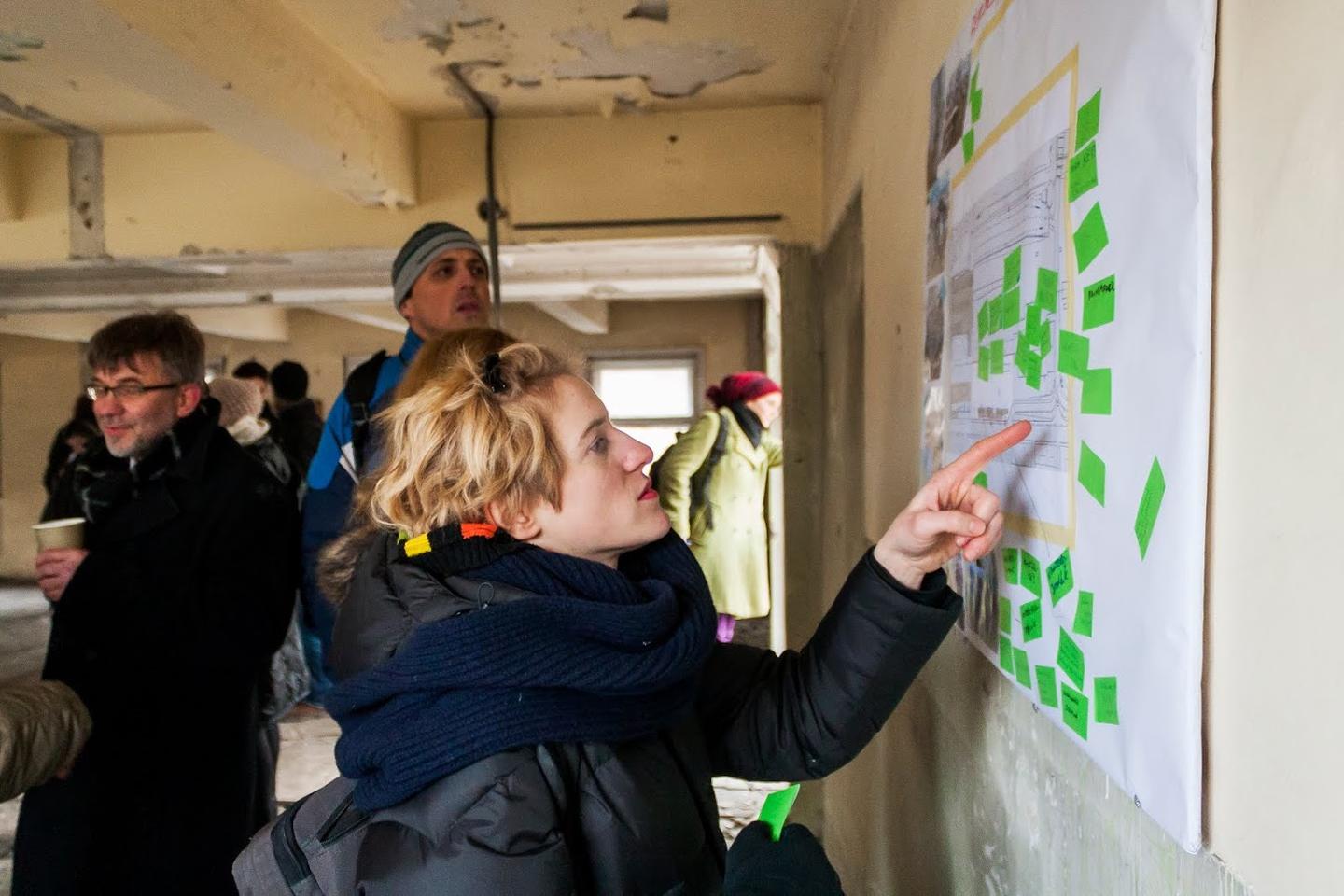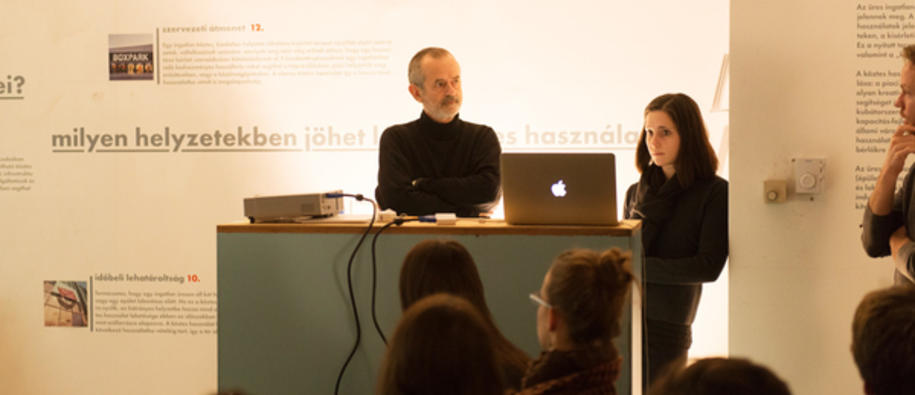Budapest has suffered more than many other European capitals because of the financial crisis and the difficult transition to a new economic system after the fall of communism: According to some estimates, 25 % of all office spaces are empty, and there are large numbers of abandoned houses and empty commercial properties. At the same time, there are many civil society actors, such as NGOs, social enterprises, community and cultural groups in need of affordable spaces for their activities.
“We already saw the signs of unsustainable real estate speculation in the run-up to Hungarian EU membership in 2004, but when the financial crisis hit us in 2008 it became a lot worse. Some buildings have even been empty for more than 10 years,” Polyák explains.
This is why the Hungarian Contemporary Architecture Centre is involved in a project aiming to make use of these empty spaces and vacant properties. The efforts will contribute to a more stable and sustainable civil society and a more transparent property marked.
In order to achieve this, the Hungarian Contemporary Architecture Centre works together with real estate developers, property owners and representatives from the Municipality of Budapest and local municipalities to get advice on the legal and economic framework. One of the challenges is that many owners are reluctant to rent out their properties for short term temporary use:
“Most owners want long term tenants, some owners would rather let their property remain empty and wait for the market to recover and some are worried about the legal and economic implications for temporary rent,” Polyák explains.
Creating awareness
Workshops play an important role in order to match organisations needing space and empty private and public properties. There was a huge response to their first call for projects: The Hungarian Contemporary Architecture Centre received more than 400 proposals, out of which 34 were selected. So far, seven workshops have been organised, matching together five organisations in three different locations. More is to come, promises Polyák:
“We are still in an early phase of the project and it takes some time when you bring so many different actors together, but there seems to be an interest on all sides of the table.”
The exhibition ‘Adaptable City’ has been one of the ways for The Hungarian Contemporary Architecture Centre to bring attention to the many unused properties in Budapest. The exhibition is organised together with the Urban Planning Department of the Municipality of Budapest, and displays empty properties in Budapest and other places in Europe.
The exhibition opened December 2013 will run until December this year.
“Hopefully, the exhibition will give an introduction to the problem, but also provide some inspiration and strategies for possible solutions,” Polyák says.
In addition, the Hungarian Contemporary Architecture Centre has also made a crowdmap – a mapping tool which collects data about vacant properties and makes the information accessible for civil society actors.
‘From Oslo to Budapest’
The Oslo School of Architecture and Design (AHO) is involved as a donor project partner. Barbara Ascher, PhD Research Fellow at AHO, underlines that cities like Oslo and Budapest have different challenges, but also that there are some similarities as well:
“Empty and unused buildings are obviously a waste of resources, and can have negative effects such as the establishment of less attractive areas and falling prices. But it is also a question on how to create an urban identity and a sense of community which also includes less well-off actors which have a lot to give, like non-commercial organisations and artists.”
On 21 May 2014, a conference – ‘From Budapest to Oslo’ - was organised by AHO in Oslo, where Levente Polyák and four other representatives from the Hungarian Contemporary Architecture Centre participated. Here, they gave their insights from city planning and the use of empty buildings in Budapest and went to field visits in Oslo. Ascher, who is currently working on the research project ‘Scarcity and Creativity in the Built Environment’ at AHO, sees the relevance of this in her research:
“My research project looks at connection between scarce resources and architecture. In this regard, the insight from this partnership is very valuable.”
About the project
The project started September 2014 and will last until March 2016.
The project has received €131 961 from Iceland, Liechtenstein and Norway through the NGO programme in Hungary.

